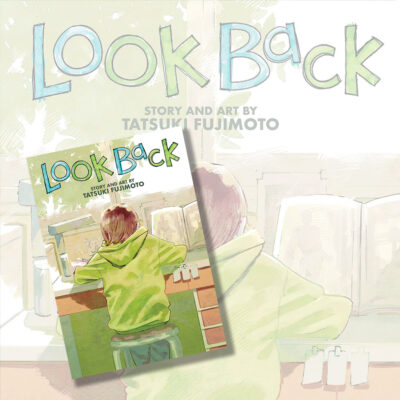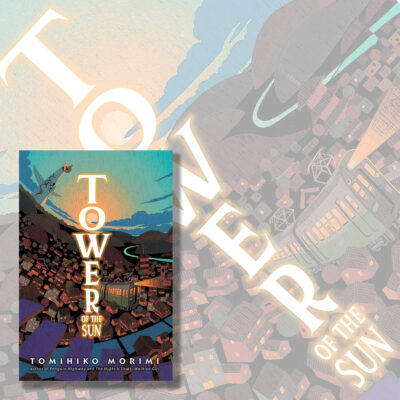
Library Reviews
Look Back
Famous for the subversively irreverent Chainsaw Man, mangaka Tatsuki Fujimoto lobs a near complete change of pace with this thoughtful, fast moving one-shot.

Fujino is a self-satisfied 4th grader who derives great pride from being the manga contributor to her school newspaper. Her aggrandisement is checked when the class’s shut-in, homebound student begins showing up her work. With her ego and joy under threat, Fujino is triggered into pouring increasing effort into her art. Although there’s nothing particularly remarkable about the scenario, there is some clever plot-smithing in store.
This is a one-shot and a light, accessible one at that. Entire pages flow without speech. Weeks and seasons pass in mere panels. Yet nothing feels missing. It is complete and finishes well. Perhaps an inversion of the sprawling, action-gore that overshadows the more subtle elements of Chainsaw Man. Look Back has also been adapted into a 2024 anime of the same name that holds fairly universal approval.
Tower of the Sun

Tomihiko Morimi is better associated with his later stories such as The Tatami Galaxy, Night is Short, Walk on Girl and Penguin Highway. All of which have received animated adaptations. However this book, Tower of The Sun, was his debut novel. It already has recognisable similarities to his more famous works, not least the creatively unconventional storyline. However, its strangeness is also somewhat different, possibly less refined and less satisfying than it would become. Popular opinion is varied though and there are plenty of opposed opinions to be found.
The titular Tower of the Sun features in a kind of peripheral, supporting manner. The novel is instead centred on an immature college mc who has suspended his studies in order to stalk his ex. The deluded lad doesn’t see it that way of course. It doesn’t make for a profound sounding premise either. At times the narrative has a rambling, stream of consciousness kind of incoherency such as when cycling through point of view characters and toggling between what is being imagined and what is reality. Still, it is demonstrative of the lasting impression that Okamoto Taro’s creation still has on the psyche of Japan.
Japanese Whisky
Learned otaku, Brian Ashcraft, wise in the ways of Japanese gaming and pop culture, departs from his usual forte and writes a decidedly informative, wickedly readable book about whisky in Japan.

Japanese whisky has achieved meteoric recognition in recent decades. International accolades have accrued consistently and rarer bottles of Suntory’s Yamazaki are auctioning for a quarter of a million (that is USD, not yen). This detailed guide unravels everything related to whisky in Japan. Pre-whisky, relevant non-whisky, whisky first-contact, pioneers like Masataka Taketsuru who expressly studied whisky manufacture in 1919 Scotland, modern distilleries, cask making, why it is sometimes spelled whiskey – all digressions are covered. Independent tasting notes on more than 100 labels are provided by whisky blogger Yuji Kawasaki.
Easily engrossing, the book’s not quite linear organisation flows smoothly from one topic to another. Tone leans towards colloquial. “Stuff” is sometimes used as a lazy noun where anything more pertinent would have not been a reach and “pain in the ass” is the summation of the problems of casking with Japanese oak. The language of the tasting notes will be familiar to readers of wine or album reviews. They veritably drip with hyperbolic vernacular of visualised smells and tastes juxtaposed with abstracted imagery in the aspiration of capturing a balance that conveys the nuances of each sample.
This offering is conspicuously sophisticated in comparison to the author’s other areas of wisdom. Brian Ashcraft’s past books have covered Japanese schoolgirls, Japanese arcade games, (not exclusively Japanese) cosplay, Japanese tattoos. This predilection for pop culture and video games is hardly surprising given his editorship at eminent gaming culture website Kotaku. His practiced expertise at presenting the niche for consumption by the masses is again harnessed in this new, illuminating resource.
(Previously reviewed 2019 June. Edited.)
